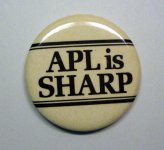Interactive programming far pre-dates Ken Iverson's APL. APL is suitable for a certain category of programming--and was not wildly popular, due to its somewhat unusual notation. Still, if your problem employed matrix manipulation, or was math-heavy APL was well worth considering.
The 1620 and 650 are in completely different categories. The 650 was a drum-memory, first-generation system with an optional 50 words of core storage. It was slow and used a 1+1 instruction format, where the location of the next instruction to be executed was part of the current instruction.
The 1620 was a second-generation computer built into a desk, so physically smaller than a 650, it was a decimal variable-word length system with a base 20,000 digits of core. It was provided in several flavors--the 1620 Model I (CADET) which did all arithmetic via table lookup in core, the Model 2, which had hardware to do math, and the 1710 which was equipped for industrial control, which had a real-time clock and interrupt capability. A lot of 1620s (and the later 1130) were sold to schools; businesses preferred the 1401. The 7070 (and 7080) can be viewed as the successor to the 1401; large second-generation decimal machines, part of the 7000 series of which, I suspect the "scientific" 7090 was most popular.
In 1963, IBM's product offerings were all over the map covering several divergent and mutually incompatible product lines. All that vanished with the introduction of the System/360 line, which greatly unified IBM's product line. For the older system users, IBM offered emulation packages on the S/360.


